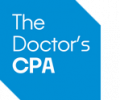Managing finances as a physician is about creating lasting wealth, minimizing taxes, and building long‑term financial security.
If you’re a locum tenens provider or independent contractor, you face a more complex landscape than your W‑2 peers.
Whether 2026 is your first full year in independent practice or you’re refining your financial strategy, this guide offers a practical roadmap to get started with physician wealth planning.
Why Wealth Management Is Critical for Physicians in 2026
Physicians often get a late start in building wealth due to extended training and delayed earnings. In 2026, that head start matters more than ever. Economic conditions are shifting, and so is the playbook for financial success.
Tax reforms may raise rates on high earners, interest rates remain elevated, and inflation continues to squeeze household budgets. If you’re a 1099 physician or working multiple locum contracts, you cannot afford to approach your finances casually. This year, a structured wealth management plan is essential.
Not sure where to begin? These six action steps can lay the groundwork for a strong financial year.
Step 1: Assess Your Financial Foundation
It is important to stabilize your financial baseline before pursuing tax strategies or investments. That means examining your cash flow, liabilities, and risk protections closely.
Start by tracking your income and expenses month to month. Budgeting might sound basic, but it is the backbone of any effective financial plan, particularly when your income varies between assignments. From there, build an emergency fund with at least four to six months of living expenses to cushion against slow periods or contract gaps.
Next, take inventory of your debt. List student loans, credit‑card balances, personal loans, and mortgages. Identify high‑interest liabilities you can prioritize for repayment. Finally, review your insurance coverage. Malpractice insurance is a must, but so are disability and term‑life policies, especially if you have a family or significant financial obligations.
Step 2: Build a Tax and Legal Strategy for High‑Income Physicians
Locum tenens income does not include built‑in tax withholding, so you must be proactive about it. If you’re an independent contractor, you are responsible for self‑employment taxes and quarterly estimated payments. Add in multi‑state tax filings, and things get complicated quickly.
To reduce your tax burden, consider forming an S corporation or LLC with an S‑corp election. These structures can significantly reduce self‑employment tax and open the door to other savings. You should also explore advanced strategies such as backdoor Roth IRAs for retirement savings, HSAs for triple‑tax‑advantaged healthcare expenses, and donor‑advised funds for charitable giving with tax benefits.
Asset protection is also critical. Legal structuring can shield your wealth from malpractice claims or business‑related liabilities. If you are earning a high income, protecting it is just as important as growing it. For physician‑specific tax and entity support, explore our tax planning services for physicians.
Step 3: Create Your Investment Strategy
With your foundation and tax plan in place, it is time to put your money to work. Every investment plan starts with clarity around your goals. Are you planning to retire early? Buy a second home? Build generational wealth? Define your objectives, then map out a time horizon and risk tolerance that align with them.
Physicians often fall into one of two camps:
- Too conservative out of fear
- Too aggressive because of a late start
A balanced, diversified portfolio offers the best of both worlds. Many doctors do well with a core allocation of low‑cost index funds across stocks and bonds. Others incorporate real estate or alternative assets to complement traditional holdings.
Don’t forget about maintenance. Your portfolio is not a set‑and‑forget plan. Rebalancing annually helps keep your risk level consistent, and investing in tax‑efficient accounts ensures more of your returns stay in your pocket. For guidance on long‑term savings strategies and planning, explore our retirement planning services.
Step 4: Adjust for Locum Tenens Realities
Wealth planning for locum physicians comes with its own set of complexities. Income from multiple assignments can fluctuate, and no single employer is setting up your benefits or retirement plan. That is why your financial system needs to be flexible and tailored.
Start by developing a cash‑flow plan that accounts for variable income. Use a baseline budget during lower‑income months and adjust upward during peak earning periods. If you’re working across state lines, stay ahead of multi‑state tax rules and know when to bring in a CPA for compliance.
Retirement saving also looks different. Without an employer‑sponsored 401(k), you can establish a SEP IRA, solo 401(k), or even a cash‑balance plan, allowing you to save substantially more than most W‑2 physicians.
When negotiating new contracts, think beyond the rate. Ask about reimbursable expenses, malpractice coverage, or housing stipends that reduce your personal taxable income.
Step 5: Plan for Estate, Legacy, and Long‑Term Protection
Even early in your career, estate planning matters. Your assets, whether modest or substantial, need direction in the event of illness or death, and your financial future needs protection today.
Start by drafting or updating a will, and designate powers of attorney and medical directives. If you have dependents, setting up a trust can ensure financial security and streamline the transfer of wealth. For physicians with charitable goals, donor‑advised funds or philanthropic trusts help support giving while offering tax advantages.
Thinking long‑term now means fewer problems later—for you and your family.
Step 6: Know the 2026‑Specific Considerations
2026 brings new economic variables that physicians should prepare for. Potential tax‑law changes may phase out key deductions or increase rates for high earners. Staying on top of legislative updates could mean thousands in savings or thousands lost if you’re unprepared.
Interest rates are expected to remain above historic lows, affecting mortgage terms and investment yields. At the same time, inflation continues to influence both lifestyle and purchasing power. That makes efficient budgeting, smart investing, and tax planning more important than ever.
If your plan hasn’t been updated in the last 12 months, now is the time.
Bonus Tip: Be Aware of Time-Sensitive Deadlines
Even the best strategies can fall flat if not implemented on time. For example, Roth conversions and employee 401(k) contributions must be completed by December 31. Health Savings Accounts (HSAs) must be opened before year-end, though they can be funded through April 15.
Corporate conversions should be submitted before Thanksgiving, since the IRS typically slows down to prepare for the new tax year. With the year ending in a flurry of holidays, investment and tax planning meetings should be scheduled early to ensure everything is in place when it counts.
How to Choose a Physician‑Focused Advisor
Not all financial advisors are equipped to support locum or independent physicians. When evaluating professionals, look for three essentials: fiduciary status, transparent pricing, and healthcare specialization.
A fiduciary advisor is legally required to act in your best interest. Fee transparency helps you avoid hidden commissions or upsells. Someone with experience working with 1099 earners will understand the complexities of locum work, from variable income to multi‑state filings and solo retirement plans.
Avoid advisors who:
- Guarantee returns
- Offer one‑size‑fits‑all investment models
- Lack tax‑planning experience
Ready to Take Control of Your Wealth in 2026?
You’ve worked too hard to let uncertainty or inaction derail your financial future. Whether you’re new to locums or refining your long‑term plan, the proper steps you take today can secure your wealth for decades.
Schedule your free consultation with The Doctor’s CPA and start 2026 with clarity, confidence, and a strategic plan that fits your physician lifestyle.


